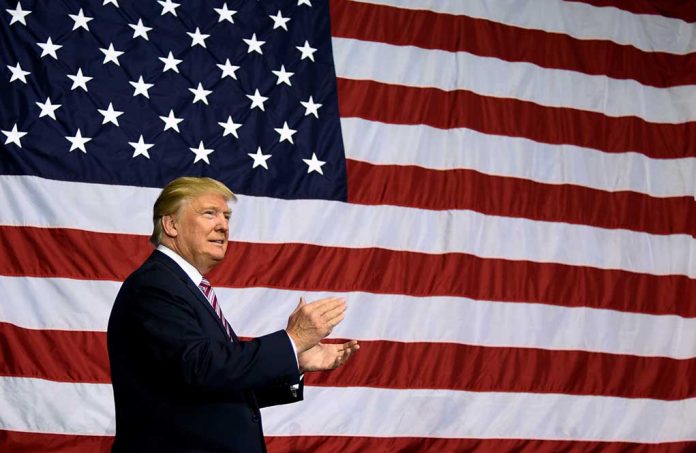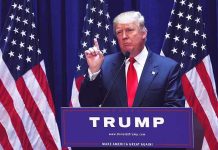
Donald Trump’s evolving relationship with Project 2025, initially marked by public critique, now sees strategic endorsement within his 2024 presidential bid, raising questions about his true political intentions.
At a Glance
- Trump initially distanced himself from Project 2025, criticizing it publicly.
- Despite initial criticism, Trump appointed Project 2025 advocates to strategic positions.
- Project 2025 seeks to significantly shift U.S. government structure, expanding presidential powers.
- The plan is supported by over 100 conservative organizations and far-right donors.
- Critics argue that Trump’s stance on Project 2025 reflects a broader political strategy.
Trump’s Initial Critique of Project 2025
Donald Trump initially distanced himself from Project 2025 during his campaign, claiming he had “nothing to do with” the policy blueprint. He criticized parts of the project as “ridiculous and abysmal,” highlighting his intent to separate himself from its more controversial elements. Project 2025, developed by the Heritage Foundation, envisioned an overhaul of the U.S. government, promoting the unitary executive theory and empowering the presidency.
The plan aimed to dismantle established checks and balances, creating an imperial presidency. It included a personnel database, a training tool, and a transition playbook for federal agencies. Project 2025’s ambitions were outlined in a 920-page document, which advocated for a reduced role for Congress, and expanding executive orders. Initially, Trump dismissed these propositions, considering them overly idealistic and impractical.
Strategic Endorsement and Appointments
Despite his initial reservations, Trump gradually moved towards endorsing elements of Project 2025. He appointed several of its advocates to key positions in his administration, sparking discussions on his true agenda. Figures like Russ Vought and Brendan Carr, known for their involvement with the project, were strategically placed, hinting at a subtle endorsement of the doctrine. This has been interpreted as a calculated political strategy rather than an outright acceptance of all Project 2025 policies.
Trump’s spokesperson emphasized his focus on the “America First” agenda, maintaining distance from Project 2025 despite the appointments. However, this alignment raises questions among political analysts. Some see it as a hidden endorsement, while others suggest it is an opportunistic maneuver designed to appeal to a broader conservative base. Markedly, his shift towards Project 2025 appears to align with several of his campaign promises, suggesting potential policy directions for his potential second term.
Implications and Political Chess
Project 2025’s influence on Trump’s political strategy remains significant. Critics argue its appeal to far-right elements has subtly shaped his policies, despite public disavowals. The initiative’s development of a conservative personnel database underscores its role in shaping future federal agency appointments. The plan’s backers, over 100 conservative organizations, promise a “second American Revolution,” suggesting significant political upheaval. As Trump navigates his 2024 campaign, these strategies underscore an intention to rectify past administrative challenges.
Ultimately, Project 2025 offers a vision for an organized second Trump administration, potentially leveraging lessons from his first term. As Trump continues to refine his political strategy, the balance between public critique and strategic endorsement of Project 2025 suggests a calculated effort to align more closely with conservative priorities. As he progresses with his campaign, Trump’s evolving stance suggests a complex political chess game aimed at consolidating his base while positioning himself for a potentially transformative second term.
Sources:
- Trump Disavowed Project 2025 During the Campaign. Not Anymore. – The New York Times
- Trump details sweeping changes he’ll carry out on day one and beyond in an exclusive interview













